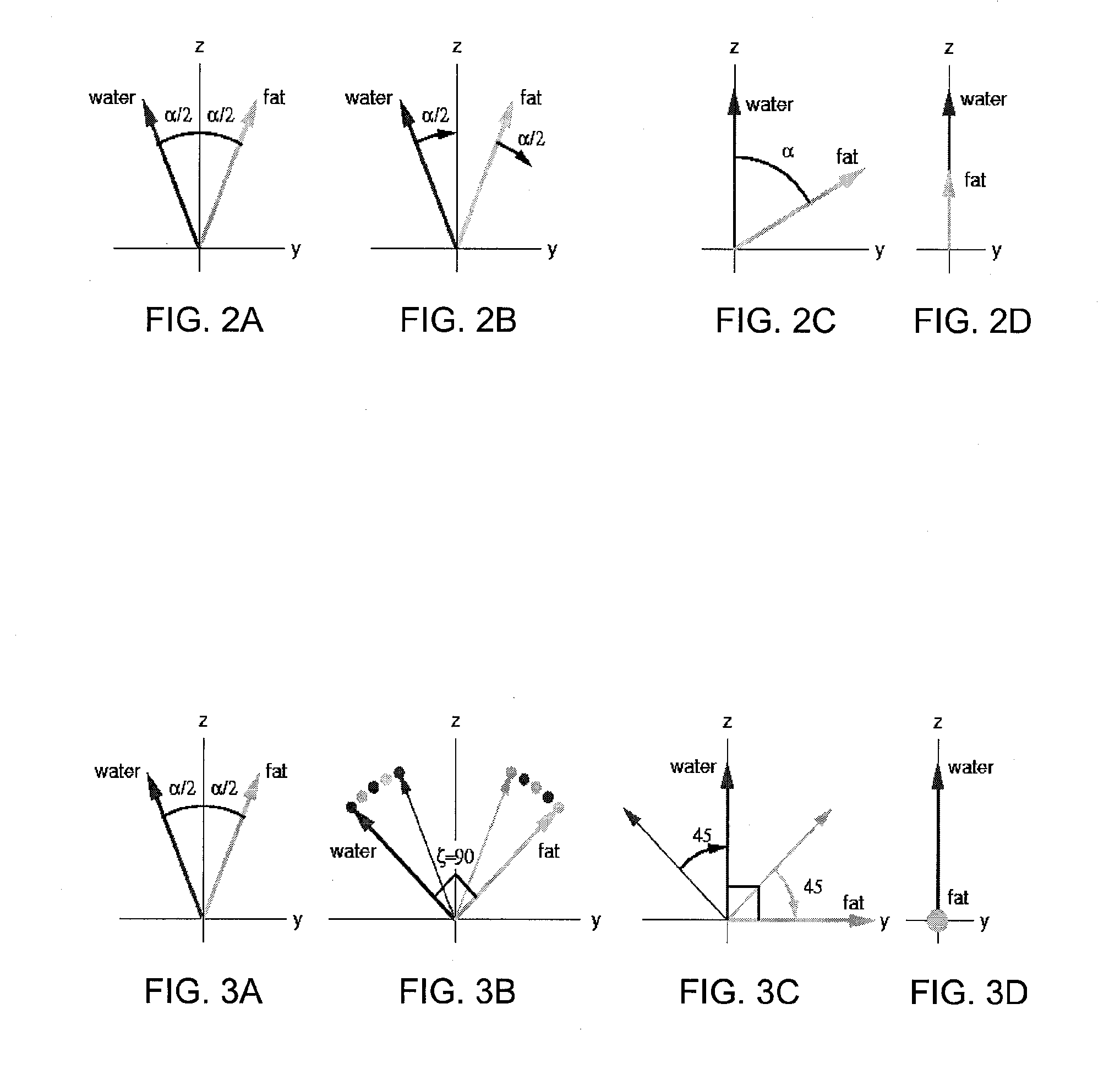Spectrally selective suppression with steady-state free precession
a steady-state free, selective suppression technology, applied in the field of magnetic resonance imaging, can solve the problems of large fat signal, destructive interference in pixels with partial volumes of water and fat, interference with signals, etc., and achieve the effect of not significantly affecting imaging efficiency, small disturbance of steady-state water signal, and greater suppression
- Summary
- Abstract
- Description
- Claims
- Application Information
AI Technical Summary
Benefits of technology
Problems solved by technology
Method used
Image
Examples
Embodiment Construction
[0024] It has previously been shown that an SSFP sequence comprising a train of phase-alternated, α-flip angle RF pulses generate echo signal (similar to spin-echoes) at a time-point TE≈TR / 2 from the mid-points of the RF pulses. Echoes generated under SSFP differ from conventional spin-echoes in that they may be formed with either positive or negative phase depending on the amount of precession experienced in each TR. Isochromats that precess approximately an even number of complete cycles in one TR form an echo in-phase with on-resonance isochromats, while those that precess approximately an odd number of cycles yield signal with opposing phase. That is, the echoes from isochromats with off-resonance frequency Δω satisfy:
(2k)2π−π<ΔωTR<(2k)2π+π→positive echo signal, and
(2k+1)2π−π<ΔωTRk+1)2π+π→negative echo signal,
where k is an integer.
[0025] This effect, shown in FIG. 1, allows the isochromats to be separated into two spectral components with a fairly sharp transition ...
PUM
 Login to View More
Login to View More Abstract
Description
Claims
Application Information
 Login to View More
Login to View More - R&D
- Intellectual Property
- Life Sciences
- Materials
- Tech Scout
- Unparalleled Data Quality
- Higher Quality Content
- 60% Fewer Hallucinations
Browse by: Latest US Patents, China's latest patents, Technical Efficacy Thesaurus, Application Domain, Technology Topic, Popular Technical Reports.
© 2025 PatSnap. All rights reserved.Legal|Privacy policy|Modern Slavery Act Transparency Statement|Sitemap|About US| Contact US: help@patsnap.com



